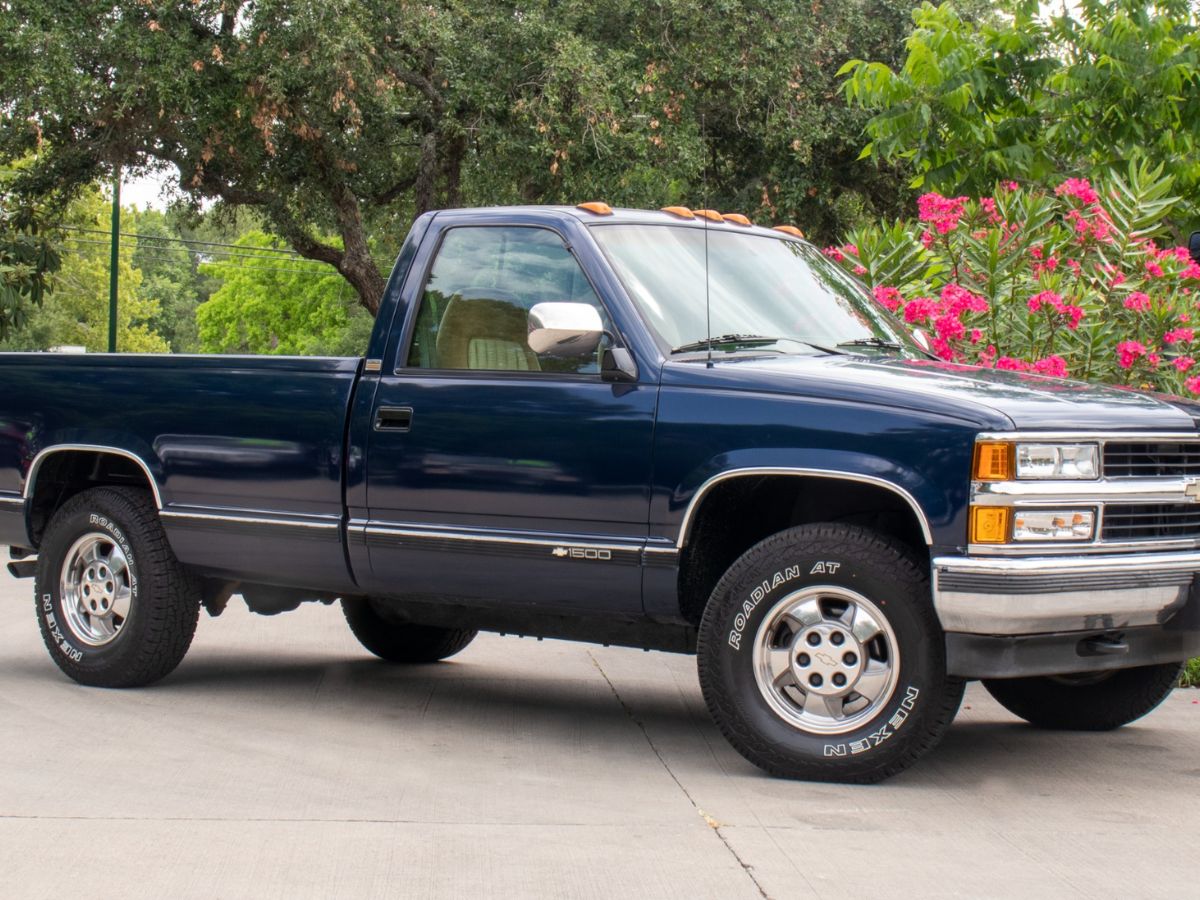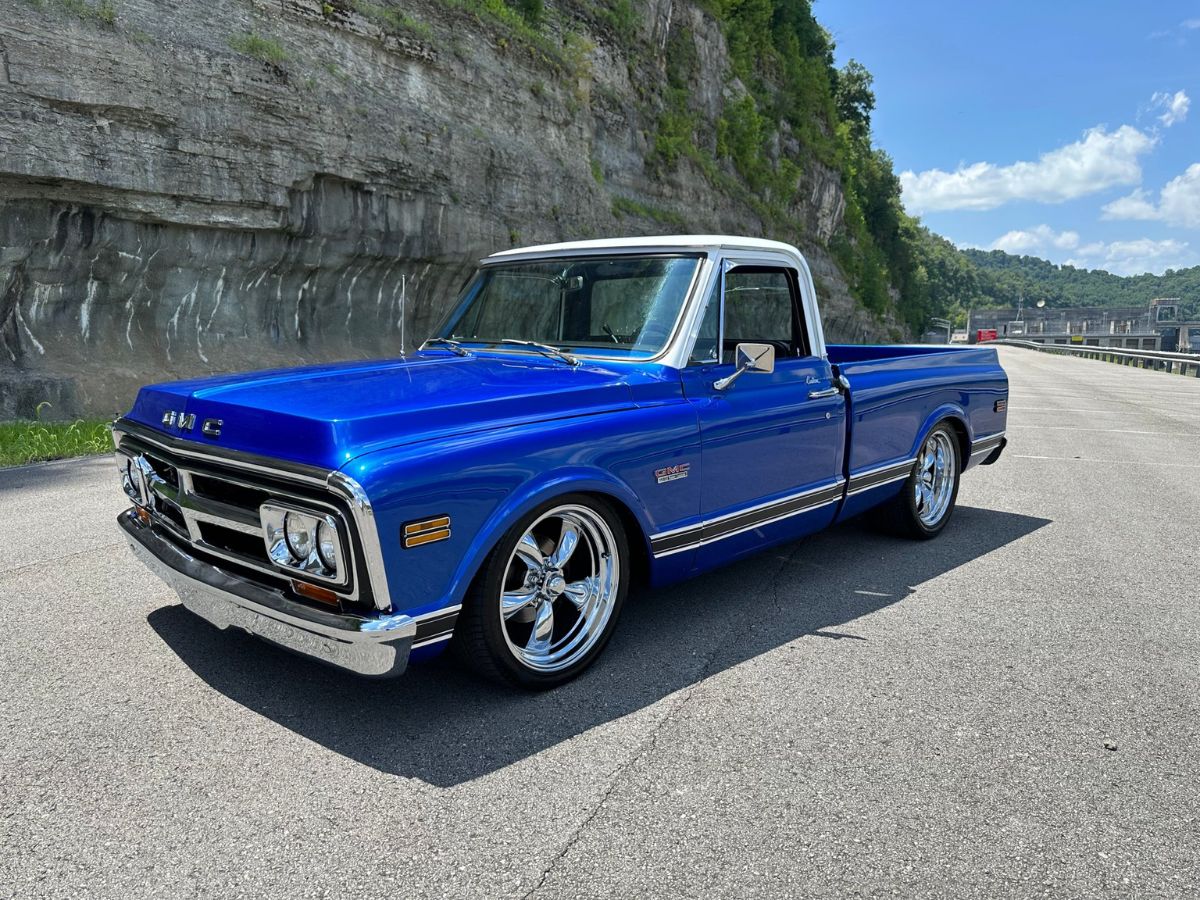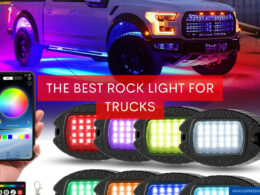In This Article Show
Over my 13 years as a mechanic, I’ve had my hands on everything from sedans to big rigs. But trucks, especially the likes of C1500 and K1500, hold a special place in my heart.
Not just because of their powerful performance or their versatility but because of the stories they carry – stories of off-road adventures, tough jobs completed, and family trips remembered.
I often get this question in the garage: “What’s the real difference between a C1500 and a K1500?” Trust me, there’s more to it than some letters and numbers. So, I decided to put my wrenches down and write up a comparison. Let’s delve into the nitty-gritty of these two iconic trucks, Shall we?
The main difference between the C1500 and K1500 trucks primarily lies in their drive systems. The C1500 is tailored for on-road use with its two-wheel-drive (2WD) system, making it a more economical and efficient choice for urban and highway driving. Conversely, the K1500 boasts a four-wheel-drive (4WD) system, granting it superior traction and capability, especially in off-road and challenging terrains. While both models have evolved in terms of design, performance, and features, their drive systems remain the fundamental distinction that guides their respective functionalities and target audiences.
Brief History of Both Truck Models
C1500: The Beginning and Evolution
The C1500, a staple in the Chevrolet and GMC lineup, first appeared in the late 1960s. Marketed as a two-wheel-drive (2WD) light-duty truck, the C1500 was a part of the brand’s C/K series, with the “C” representing 2WD versions and the “K” denoting 4WD versions.
Over the decades, the C1500 saw multiple redesigns, introducing aesthetic and technological enhancements. Engine options expanded, comfort features got richer, and the body design became more aerodynamic.
While the C1500 model name saw a change in the late 1990s, its legacy continued in what many now know as the Silverado 1500 for Chevrolet and Sierra 1500 for GMC.
K1500: The Rugged Brother
Parallel to the C1500’s introduction, the K1500 emerged as its four-wheel-drive counterpart. Its place in Chevrolet and GMC’s lineup was clear: a truck for those who needed that extra grip and capability, whether for off-roading, tough terrains, or demanding jobs.
As with the C1500, the K1500 underwent multiple changes over the years. Beyond its 4WD advantage, the K1500 came with beefier suspension systems, more substantial drivetrains, and design features that indicated its readiness for rougher terrains.
The K1500’s name, similar to its sibling, transitioned in the late 1990s, evolving into models like the Silverado 1500 4WD and the Sierra 1500 4WD. Yet, its essence as a reliable and robust truck remains unchanged.

Design and Aesthetics
C1500: A Balance of Style and Functionality
The C1500, from its initial design, showcased a blend of sleekness and practicality. The body lines were kept clean and straightforward, emphasizing its road-friendly nature.
As it evolved, the truck began incorporating more pronounced curves, moving away from the more boxy designs of the 70s and 80s. The grille, in particular, evolved into a bolder statement, bearing the emblem of either Chevrolet or GMC with pride.
Inside the cabin, the C1500 always aimed for a balance between comfort and utility. As time passed, the interiors saw an upgrade from simple vinyl seats to plush cloth and even leather in some upscale versions.
Dashboards too transitioned, from minimalist designs to ones that incorporated modern infotainment systems, making them not just workhorses but also suitable for everyday family use.
K1500: Rugged Outside, Cozy Inside
The K1500 had a slightly different design ethos. Given its 4WD nature and intended audience, it came with a more rugged exterior. Features like pronounced wheel arches, skid plates in certain models, and beefier tires spoke to its off-road capabilities.
However, this didn’t mean the K1500 sacrificed on aesthetics. It too moved from the boxy design to a more aerodynamic and contemporary look over the years.
While the K1500 was crafted for tough terrains, comfort was never overlooked. The early models came equipped with the essentials, ensuring a comfortable ride even in challenging conditions.
As technology and trends progressed, the interiors saw upgrades similar to the C1500, including advanced infotainment systems, plush seating, and improved sound insulation for a quieter ride.
Performance and Engineering
C1500: Mastery on the Move
From its inception, the C1500 was engineered with efficiency and reliability in mind. As a 2WD, it was tailored primarily for on-road performance. Throughout its life cycle, it was offered with a variety of engine choices ranging from economical V6s to potent V8s.
Earlier models boasted carbureted engines, which gradually transitioned to fuel injection for improved efficiency and responsiveness. As time went on, advancements in transmission systems, from basic 3-speed automatics to more refined 4-speed and later 6-speed automatics, ensured smoother drives and better fuel economy.
Suspension setups on the C1500 were optimized for comfort, making it a favorite for long drives or city commutes. However, it never shied away from heavy-duty tasks, and its durable chassis and design made certain it could handle substantial payloads.
K1500: The Powerhouse of Performance
Designed for tougher tasks and terrains, the K1500 embodied strength.
The 4WD system, which differentiated it from the C1500, was complemented by a range of robust engines. Like the C1500, the K1500 too offered a mix of V6s and V8s, but often with a tilt towards higher capacities to cater to its off-road and heavy-duty persona.
Transmissions in the K1500 evolved in tandem with its sibling, moving from simpler setups to more complex systems that offered both power and efficiency. Adding features like locking differentials in certain models further emphasized its off-road prowess.
Where the K1500 truly stood out was its suspension. Engineered for varied terrains, it often featured a more rugged setup, ensuring stability whether on a muddy trail or a rocky incline. This engineering marvel was not just about muscle but also about adaptability, with many models featuring switchable 2WD/4WD modes, allowing drivers to choose based on conditions.
Drive System: The Primary Difference
The drive system is one of the most distinguishing factors between the C1500 and the K1500. Let’s unravel this primary difference and understand how it impacts these trucks’ overall functionality and user experience.
C1500: The Two-Wheel Drive (2WD) Advantage
At the heart of the C1500 is its two-wheel-drive system. This essentially means that the engine’s power is transmitted to only two wheels, typically the rear ones, to propel the truck forward.
Benefits of 2WD in C1500
- Efficiency: Generally, 2WD systems weigh less than 4WD ones. They can offer slightly better fuel efficiency with less weight and fewer components to power.
- Maintenance: With fewer components involved, 2WD systems tend to have reduced maintenance needs and costs over time.
- Simplicity: For users who primarily drive in urban environments or well-paved roads and don’t require off-road capabilities, a 2WD like the C1500 offers straightforward performance.
K1500: Embracing the Four-Wheel Drive (4WD)
The K1500 steps up the game with a four-wheel-drive system. This means that power from the engine is distributed to all four wheels, ensuring better traction, especially in challenging terrains and conditions.
Benefits of 4WD in K1500
- Traction: On slippery surfaces like mud, snow, or ice, the 4WD system shines, providing enhanced grip and reducing the likelihood of getting stuck.
- Off-Roading: Designed for adventurers at heart, the K1500 with its 4WD can tackle tough terrains, from rocky paths to sandy dunes.
- Towing and Payload: The additional traction provided by 4WD can be particularly useful when towing heavy loads or carrying significant payloads, especially on inclines or uneven surfaces.
Drawbacks to Consider
- Complexity: 4WD systems, by their very nature, involve more components. This can lead to higher maintenance needs and costs over the lifespan of the vehicle.
- Fuel Efficiency: Typically, 4WD vehicles tend to be slightly less fuel-efficient than their 2WD counterparts due to the added weight and energy required to power all four wheels.
In a nutshell 📝
The choice between 2WD and 4WD boils down to individual needs and preferences. If your journeys predominantly take you through city streets or highways, the C1500’s 2WD system offers a blend of simplicity and efficiency.
On the other hand, if you’re one to venture off the beaten path or require superior traction in various conditions, the K1500’s 4WD system is engineered for such adventures.
Fuel Efficiency
Fuel efficiency remains a pivotal factor for many when choosing a vehicle. Even in the realm of trucks, where power and capability often take the forefront, how far a truck can travel on a gallon of fuel is crucial. Let’s examine how the C1500 and K1500 fare in this aspect.
C1500: Efficient Urban Cruiser
The C1500, with its two-wheel-drive system, generally presents a slight advantage in fuel efficiency. Without the added weight and complexity of a 4WD system, the C1500 can offer more miles per gallon under similar conditions.
Key Factors Influencing C1500’s Fuel Efficiency
- Lighter Weight: Less weight means the engine doesn’t have to work as hard to move the vehicle, leading to better fuel economy.
- Simpler Drive System: The 2WD system has fewer components to power, contributing to better efficiency.
- Engine Options: Over the years, the C1500 has had various engine options, with some being tailored for optimal fuel efficiency.
K1500: Power Meets Practicality
While the K1500 is engineered for tougher tasks and terrains with its 4WD, it doesn’t lag far behind in terms of fuel efficiency. Modern engine technology and design advancements have enabled the K1500 to maintain reasonable fuel efficiency figures, even with its rugged build.
Key Factors Influencing K1500’s Fuel Efficiency
- Advanced Engine Tech: Modern K1500 models benefit from technologies like cylinder deactivation, which can improve fuel efficiency during lighter loads or cruising.
- Switchable Drive Modes: Many K1500 models allow drivers to switch between 2WD and 4WD, offering the option to save on fuel when the 4WD capability isn’t needed.
- Aerodynamic Designs: Over the years, design refinements have made the K1500 more aerodynamic, helping reduce drag and improve fuel consumption.
In summary 📝
While the C1500 might edge out slightly in terms of fuel efficiency due to its inherent design and purpose, the gap between the two models has narrowed over the years.
Advances in technology and engineering have made the K1500 a viable option even for those conscious about fuel consumption. However, as always, actual fuel efficiency can vary based on driving conditions, maintenance, and individual driving habits.

Cost and Value
For many potential truck owners, the financial aspect becomes a defining factor. Let’s evaluate the C1500 and K1500 in terms of their cost and the value they provide to discerning buyers.
C1500: Affordability Meets Function
Given its design as a more urban-friendly and simpler two-wheel-drive truck, the C1500 typically starts at a lower base price than its 4WD counterpart.
What Drives C1500’s Value Proposition
- Initial Cost: Generally, the acquisition cost of a C1500 model is more affordable, making it an attractive option for first-time truck buyers or those on a tighter budget.
- Maintenance: With a less complex 2WD system, costs over the truck’s lifespan can be marginally lower.
- Fuel Efficiency: As discussed earlier, the potential for better fuel efficiency might lead to long-term savings for the owner.
K1500: Investing in Versatility
The K1500, with its enhanced capabilities and four-wheel-drive system, understandably comes with a higher price tag. But it’s essential to consider the breadth of features and versatility it brings to the table.
What Constitutes K1500’s Value Offerings
- Capability: The added cost brings along superior traction, off-roading potential, and a generally more robust build.
- Resale Value: Historically, 4WD trucks often retain their value better over the years, leading to potentially higher resale values.
- Adaptability: Whether it’s challenging terrains, towing heavy loads, or navigating through adverse weather conditions, the K1500 is built to handle it all. This adaptability can be invaluable for those often in varying situations.
Additional Costs to Consider for K1500
- Maintenance: The 4WD system, while robust and dependable, might require more frequent checks and upkeep, translating to slightly higher maintenance costs over time.
- Fuel Consumption: While the K1500 has made strides in fuel efficiency, it might still consume more fuel in the long run compared to the C1500, especially if frequently operated in 4WD mode.
Making the Right Choice
From a pure cost perspective, the C1500 might seem more economical, especially considering the initial purchase price and potential long-term savings on fuel and maintenance.
However, the value isn’t solely monetary. The versatility, capability, and adaptability that the K1500 offers can be indispensable for many, making it worth the extra investment.
In the end, the decision between the two boils down to individual needs and priorities. For city dwellers and those looking for a reliable workhorse without the frills, the C1500 could be the way to go.
In contrast, adventurous souls, frequent off-roaders, or those residing in areas with tricky terrains or unpredictable weather might find the K1500’s value proposition more appealing.










